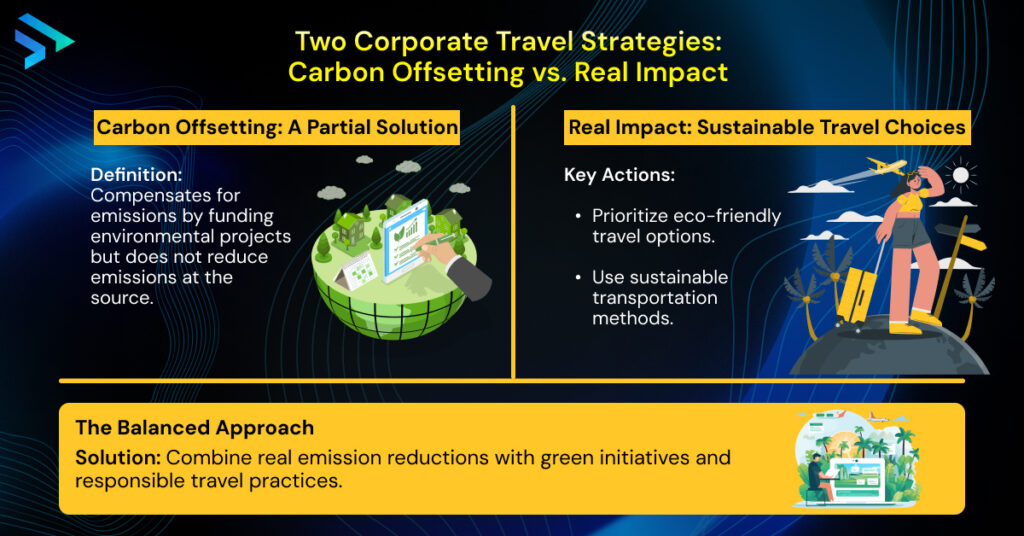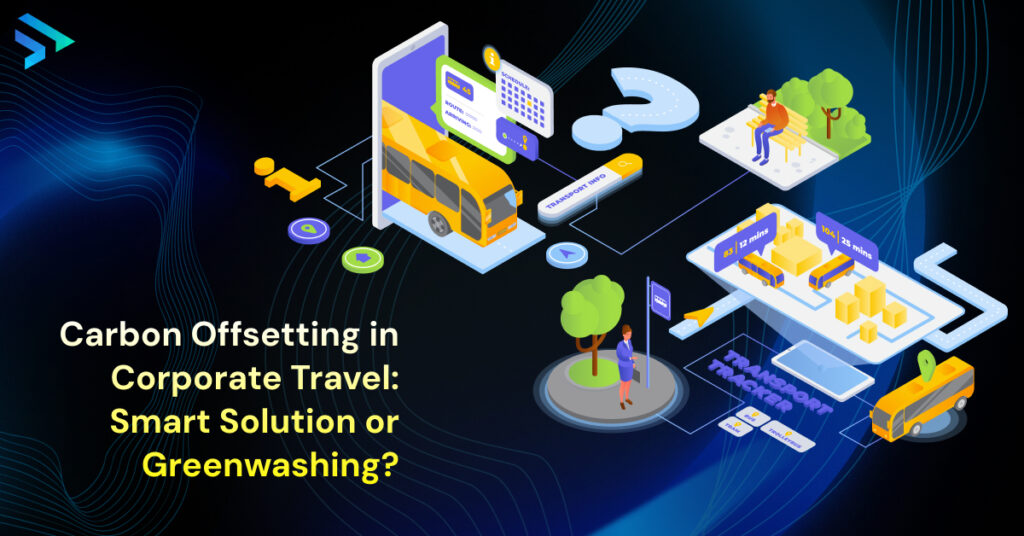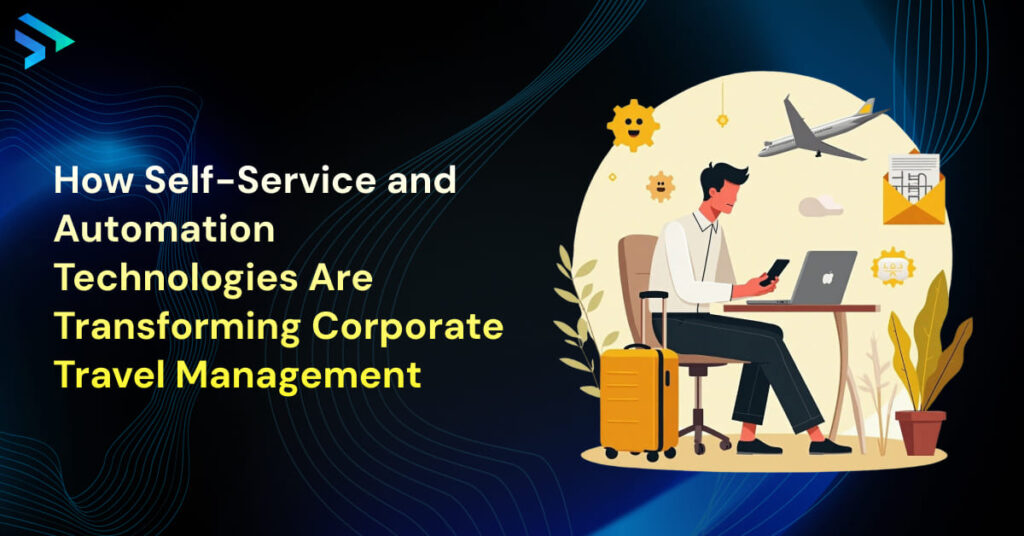Business travel isn’t going anywhere. It’s how relationships are built, deals get done, and teams stay connected in a global world. But for all its value, there’s a very real downside that’s often brushed aside.
It’s carbon. A lot of it.
Flights, hotels, car rentals they all come with emissions. In fact, corporate travel is behind around 2% of global carbon emissions, and air travel is by far the biggest slice.
As companies look to align with sustainability goals, the go-to solution seems to be carbon offsetting. But is that really solving anything or just helping companies look better on paper?
Let’s unpack that.
What Carbon Offsetting Really Means
Offsetting sounds nice and simple: create emissions here, erase them over there. You burn carbon on a work trip, then fund something that removes or prevents that same amount of carbon somewhere else in the world.
That might be:
- Planting trees
- Supporting wind or solar energy
- Funding clean cookstove programs in developing countries
- Capturing methane from landfills
Basically, you pay for a fix instead of cutting the cause. And on the surface, that seems fair enough. But not all offset projects are equal, and not all of them actually deliver on what they promise.
What You’re Actually Paying For
Offsets are bought as “carbon credits.” One credit typically represents one ton of CO₂ that’s either avoided or removed from the atmosphere.
But here’s where things get tricky some of those credits fund solid, measurable impact. Others… not so much.
Let’s look at the types:
- Tree planting: Trees absorb carbon, sure. But they take decades to do it, and there’s no guarantee they’ll be around long enough to make a difference.
- Renewable energy: Wind or solar farms that replace fossil fuel use. These avoid future emissions, but don’t touch the ones you’ve already created.
- Carbon capture: High-tech and expensive. It’s promising, but still early stage and not widely scalable.
- Methane reduction: Capturing methane from farms or waste sites this one’s quick and powerful but infrastructure-heavy.
- Community projects: Like cookstoves that reduce wood-burning in rural areas. Great for health and climate, but small in scale.
Some projects are well-run. Others have been caught exaggerating their benefits or counting reductions that don’t really exist.
Common Types of Carbon Offset Projects
| Project Type | How It Works | Challenges |
|---|---|---|
| Reforestation & Afforestation | Trees absorb CO₂ over time. | Takes years to be effective, risk of deforestation. |
| Renewable Energy | Supports wind, solar, and hydro projects. | Doesn’t directly remove CO₂ already in the air. |
| Carbon Capture & Storage (CCS) | Captures and stores CO₂ before it reaches the atmosphere. | Expensive and still developing. |
| Methane Capture | Captures methane from landfills and farms. | Requires large-scale infrastructure. |
| Community Sustainability | Funds cleaner cookstoves, water purification, etc. | Local impact but limited large-scale reductions. |
Why Companies Love Offsets Anyway
To be honest, it’s easy to see why businesses like this route.
- It’s fast.
- It’s available.
- It looks good in reports and pitch decks.
- It doesn’t require changing how the company actually operates.
And in some cases, offsetting is the only short-term option while cleaner tech catches up.
That said, when offsetting becomes the only thing a company does to “go green,” it starts to look less like a solution and more like a smokescreen.
When Offsets Become a Shortcut
Let’s not sugarcoat it: some companies use offsets to check a box. Buy credits, slap on a carbon-neutral label, move on. But nothing about the actual travel behavior changes.
Flights still happen. Hotels still burn energy. Rental cars still run on gas. The emissions are still very real.
What happens instead? The responsibility gets outsourced.
And the problem with that? Offsets can fall apart if the project isn’t legitimate. One high-profile investigation found that the majority of rainforest-based offsets from a major provider were practically worthless.
Trees weren’t protected, or the emissions reductions were overcounted. That means companies were paying to feel better not actually doing better.
What You Should Be Doing Instead

If your company’s first instinct is to buy offsets and call it a day… you’re skipping the hard part.
Here’s what real progress looks like:
Cut the trips that don’t need to happen.
A video call doesn’t replace everything. But for internal planning meetings or routine check-ins? You don’t need a flight.
Use better options when you do travel.
Book trains instead of planes when you can. Fly with airlines experimenting with sustainable fuels. Stay in hotels that care about more than towel reuse signs.
Set carbon limits, not just budgets.
If a department has to track emissions the same way it tracks spend, it changes how travel is planned. Suddenly that last-minute international flight needs a real justification.
Support projects that actually move the needle.
Don’t just buy credits. Back companies building electric aircraft. Fund clean energy installations. Help bring EV infrastructure to underserved areas.
That’s the kind of investment that doesn’t just cancel out carbon it builds something better.
Conclusion:
Carbon offsetting isn’t a scam. It’s just not a solution on its own.
Used right, it can help especially when reducing emissions directly isn’t an option. But if it’s your company’s only move toward sustainability, then it’s not really about climate. It’s about convenience.
So what’s the better path?
- Travel when it matters.
- Travel smarter when you go.
- Offset the emissions you truly can’t avoid and make sure the offsets are real.
It’s not perfect. But it’s honest.
And right now, that’s a whole lot better than pretending the problem doesn’t exist.



